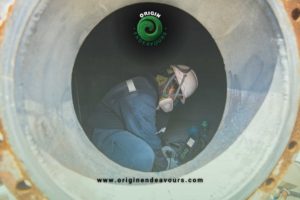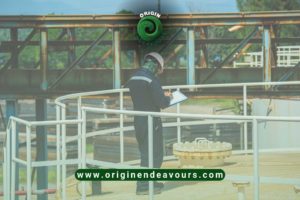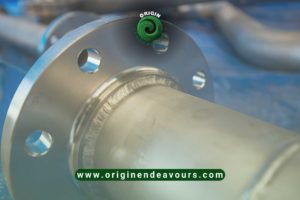Table of Contents
In the realm of industrial infrastructure, the integrity of Above Ground Storage Tanks (ASTs) is a critical concern. Non-Destructive Testing (NDT) is a key methodology for safeguarding these assets against potential hazards and ensuring their long-term functionality. This discussion focuses on ASTs and explores the best practices in non-destructive inspection that are essential for maintaining their optimal functionality and safety.
Best Practices in AST Inspection
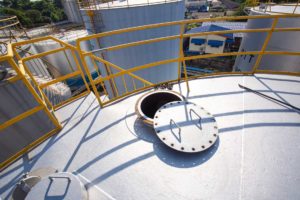
Thorough Visual Examination
The first step in a comprehensive Above Ground Storage Tank inspection is a detailed visual examination. Trained inspectors meticulously check the tank’s exterior for signs of wear such as corrosion, uneven settlement, or visible anomalies like cracks or dents. This stage is vital for early detection of issues, enabling prompt intervention. Inspectors also assess the tank’s surroundings and support structures to ensure there are no environmental factors that could compromise its integrity.
Ultrasonic Testing for Thickness Measurement

Ultrasonic testing is pivotal in Above Ground Storage Tank inspection. This technique employs high-frequency sound waves to accurately measure the thickness of tank walls. Identifying areas where the wall may have thinned is crucial for preventing leaks or failures. This method is highly effective in pinpointing areas needing repair or closer monitoring, thus facilitating targeted maintenance efforts that help maintain the tank’s structural integrity.
Magnetic Particle Testing for Surface Defects
Magnetic particle testing is an integral part of the comprehensive evaluation of ASTs. This method is specifically designed to detect surface and near-surface defects, such as cracks or seam failures, particularly in ferromagnetic materials. The process involves magnetizing the tank’s surface and then applying ferrous particles, which gather and form visible indications over flaws. This method is especially useful for inspecting welds and other critical joinings in the tank structure.
Radiographic Testing for Internal Assessment
Radiographic testing is a crucial tool for internal examination of ASTs. It uses penetrating X-rays or gamma rays to create an image of the tank’s internal structure. This method is highly effective for detecting internal corrosion, erosion, or other anomalies like defective welding. Radiographic testing provides a more comprehensive view of the tank’s condition, allowing for a deeper understanding of its structural health without the need for invasive procedures.
Eddy Current Testing for Non-Ferrous Alloys
For ASTs made from non-ferrous alloys, eddy current testing is an invaluable technique. This method utilizes electromagnetic induction to detect surface and subsurface flaws in conductive materials. It’s particularly effective for identifying areas of corrosion or cracking in tanks made from materials like aluminum or copper, providing critical insights for maintenance and repair strategies tailored to the specific material characteristics of the tank.
Advantages of Adhering to Best Practices
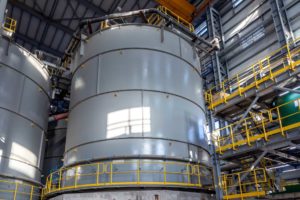
Prolonged Asset Lifespan
By implementing these best practices in AST inspection, industries can significantly extend the lifespan of their storage tanks. Regular and thorough assessments ensure that minor issues are identified and addressed early, preventing them from escalating into major problems. This proactive approach to maintenance helps in preserving the tank’s structural integrity over time, thereby maximizing its operational lifespan and reducing the need for costly replacements.
Enhanced Safety Measures
Strict adherence to NDT best practices directly translates into enhanced safety. By identifying potential issues early, such as structural weaknesses or corrosion, the risk of catastrophic failures, leaks, or spills is significantly reduced. This proactive safety management not only protects the facility and its assets but also ensures the safety of employees and the environment, thereby fostering a culture of safety and reliability.
Compliance with Industry Standards
In many industries, storage tanks are governed by stringent regulatory standards. Following best practices in non-destructive inspection ensures that these tanks meet or exceed industry-specific safety and quality standards. This compliance is crucial for avoiding legal and financial repercussions and demonstrates an organization’s commitment to responsible and ethical operational practices.
Final Takeaways
A proactive and comprehensive approach to AST inspection through non destructive testing is essential for industries that rely on storage tanks. We understand the critical importance of these inspections. By incorporating a range of advanced inspection techniques such as visual examinations, ultrasonic and magnetic particle testing, radiographic assessments, and eddy current testing, we provide a thorough and accurate evaluation of tank integrity. Our commitment to these best practices not only ensures the prolonged lifespan of your vital assets but also significantly enhances safety standards and ensures compliance with industry regulations. This dedication ultimately contributes to the sustainable and responsible operation of your industrial facilities.
Partner with Origin Endeavours for state-of-the-art non-destructive testing services. Contact us today for comprehensive inspections that our expert team will conduct to safeguard your assets, ensure regulatory compliance, and enhance operational safety.


